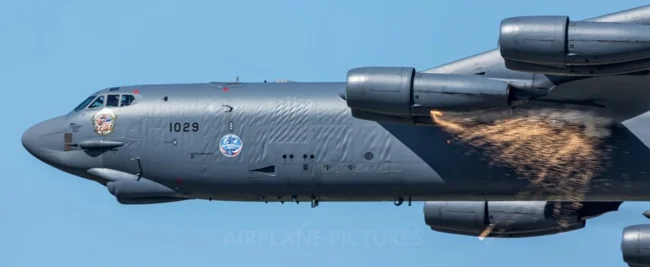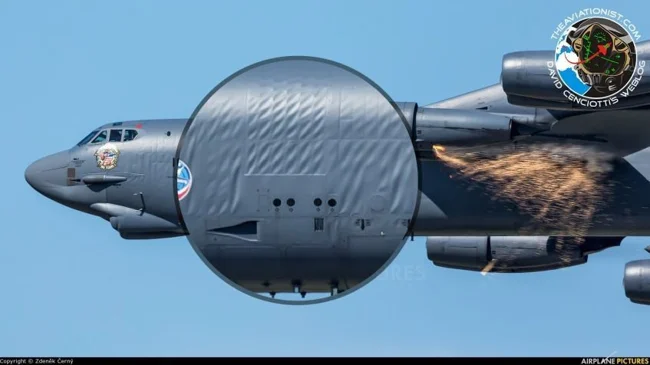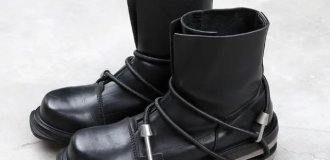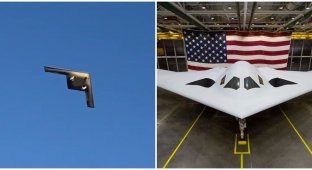Why Does the American B-52 Have Wrinkles? (2 photos)
American internet users saw this photo of their bomber and wondered why it was covered in wrinkles. Perhaps it's just old age, and they need urgent replacement?
It turns out that... 
Experts explain that the ripples on the aircraft's surface are not related to its age or technical problems. The reason is quite prosaic: to reduce weight, the designers use thin skin that can flex in the airflow without affecting the bomber's performance. Furthermore, wrinkles are typical for most large-bodied aircraft and are normal, similar to wing oscillation in flight.
Each airframe element is designed to reduce the aircraft's overall weight while still supporting the load of the spars. This load can be of three types: compression, tension, and shear. When the thin fuselage skins are under stress, they can flex, resulting in the appearance of these wrinkles. On the B-52, they are usually visible in the forward area between the wing and the cockpit.
In 2017, photographer Zdeněk Černý photographed a B-52H Stratofortress bomber. The first question, of course, was not about the "ripples," but about the sheaf of sparks flying from the aircraft. The incident was caused by an engine malfunction or the ingestion of a foreign object. 
The American Boeing B-52 Stratofortress strategic bomber has been in service with the US Air Force since 1955 and is one of the few military aircraft to have been in continuous service for more than half a century. Its primary purpose was to deliver two high-yield thermonuclear bombs to any point in the USSR.























